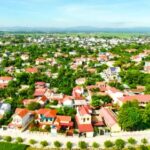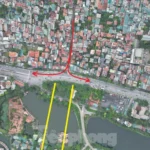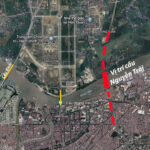Landmark Identities: Forging a Distinct Sense of Place
Architecture has always been a mirror, reflecting the cultural identity, historical context, and spirit of the age of nations and regions throughout history. It’s no coincidence that pyramids evoke Egypt, the Great Wall symbolizes China, and the Colosseum represents Rome. These iconic structures are more than just architectural masterpieces; they are identity markers and testaments to the evolution of urbanization.
Moving into the 21st century, a new type of iconic architecture has emerged, driven by a distinct vision: to assert the competitiveness and global standing of individual cities. Masterpieces like The Shard in London and Marina Bay Sands in Singapore have enriched the world’s architectural heritage while reshaping the urban landscapes of their respective cities.
The Shard, a 95-story skyscraper inaugurated in 2012, serves as a visual landmark for London. It has boosted the economy and tourism in the South Bank area, contributing to the modern and dynamic image of the city. Meanwhile, Marina Bay Sands, a modern architectural marvel in Singapore, blends the past and future in a bold urban vision. Its unique design, resembling a giant ship atop three towers, stands across the bay from the Merlion – Singapore’s iconic statue. Marina Bay Sands embodies the nation’s aspiration for mastery over its destiny, catalyzing the area’s development into a leading financial, tourist, and creative hub in Asia.
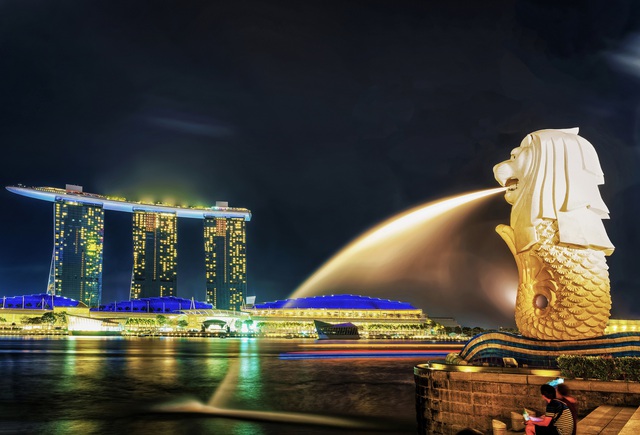
Marina Bay Sands and the Merlion statue – Singapore’s iconic landmarks.
Da Nang, a vibrant city in Southeast Asia, has taken a unique approach to creating its architectural symbol. Known for its potential to become the next Singapore, Da Nang seamlessly blends advanced technology with traditional cultural spirit, fusing modern steel and concrete with ancient sculptural art to create the Dragon Bridge. This urban icon embodies the essence of Vietnam.
Ranked among the top 20 most impressive bridges globally by ViraLnova, the Dragon Bridge transcends its initial transportation function to become a cultural and architectural landmark. Its design, inspired by the Ly dynasty dragon, evokes a sense of East Asian spirit and Da Nang’s ambition to embrace the open sea. The bridge’s symbolic power has contributed to the city’s recognition as a global destination and “a symbol of Asia’s prosperity,” as described by CNN.
Declarations of Identity and Aspirations
In an era of global urbanization, iconic architecture has become a competitive strategy for major cities. It’s not just about shapes and heights but about declaring a city’s identity and aspirations in a constantly evolving world.
The power of a symbol can transform everything. While it may take decades for a city to build its reputation, a single landmark structure can put it on the global map. When a unique and distinctive icon emerges, it can change how the world perceives that place. The resulting media and social media exposure attract visitors eager for exploration and experience. Additionally, these structures contribute to creating attractive living and working environments for young professionals, experts, and investors.
In the spirit of creative excellence, a new project is set to debut in Da Nang, marking a new milestone in the city’s architectural landscape. Located at the foot of the Dragon Bridge, this development will not only build upon the existing symbolic value of the bridge but also introduce a unique living space imbued with art, culture, and contemporary lifestyles.
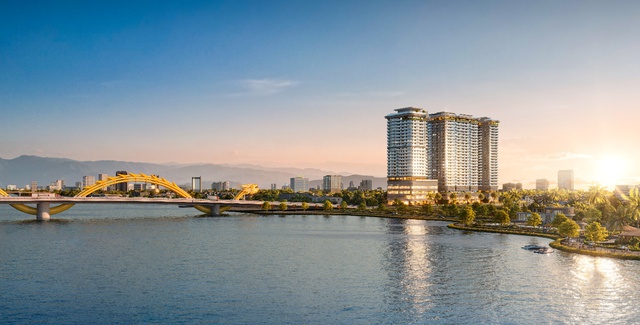
An iconic project next to the Dragon Bridge, set to launch in June.
Led by ROX Signature, a premium real estate brand within the ROX Group ecosystem, and crafted by top design consulting firms, this future urban legacy in Da Nang will redefine the standards of luxurious, exclusive, and bold living. ROX Signature is committed to creating distinctive and artistic living spaces that will become iconic. With stringent development standards, the brand prioritizes heritage and human experiences above all else.
As the upcoming project illuminates the cityscape alongside the iconic Dragon Bridge, Da Nang will gain a new visual landmark and a renewed declaration of its identity and developmental vision. In an age of competitive cities, iconic architecture has become the universal language of ambition and resilience. Each structure will leave its mark on the horizon, connecting the past with the present and pioneering the future.
The Underground Tunnel Proposal: Hanoi’s Department of Construction and Expert Insights
On the afternoon of June 13th, representatives from the Hanoi Department of Construction stated that the proposal to build an underground tunnel across Ho Tay Lake by a foreign construction corporation is not in line with the current master plan. Meanwhile, many experts and urban planners argue that the idea is feasible and deserves serious consideration.
The Vibrant Saigon River: Unveiling Ho Chi Minh City’s Riverside Renaissance
Vice Prime Minister Tran Hong Ha has approved the adjusted master plan for Ho Chi Minh City’s development until 2040, with a vision towards 2060. This decision, outlined in Resolution No. 1125, charts a course for the city’s future, addressing key aspects of urban planning and development to create a sustainable and thriving metropolis.


